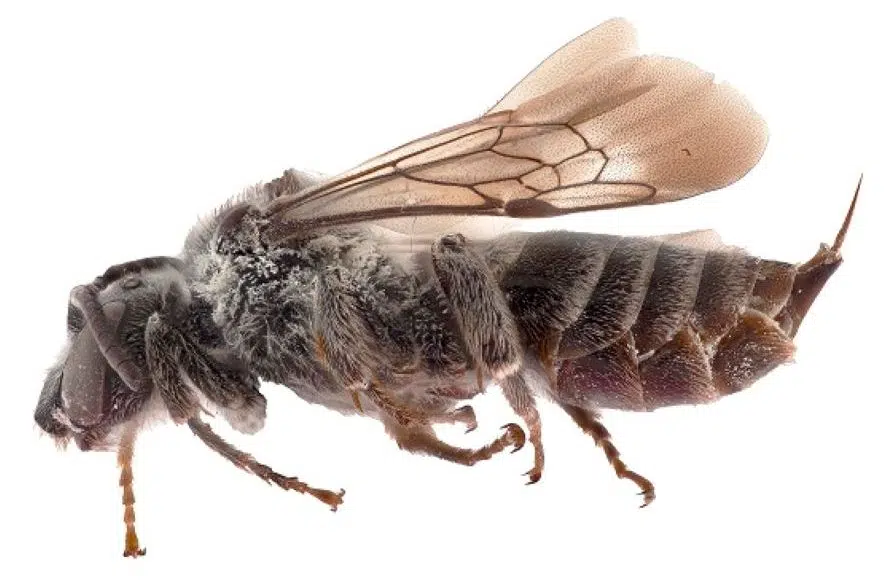There’s a buzz in Saskatchewan after a specimen of a rare bee – last seen in the province nearly 70 years ago – was found near Wood Mountain.
A team from the Royal Saskatchewan Museum (RSM) collected a specimen of the Macropis Cuckoo Bee near Grasslands National Park in 2013, but only recently discovered the magnitude of their find.
According to a release from the Ministry of Parks, Culture and Sport, the bee “is a nest parasite, or cuckoo, of oil-collecting bees of the Macropis group that is entirely dependent on the oil from a wildflower known as Fringed Loosestrife.”
“This cuckoo is one of only two species in the Epeoloides genus in the world, and the only one occurring in the Western Hemisphere,” Dr. Cory Sheffield, the RSM’s curator of invertebrate zoology, said in the release.
“This specimen supports that populations may still exist in the province, though it is still one of the most uncommon bees in Canada.”
The bee has previously been found in only two locations in the province – in Wood Mountain in 1955 and in Wallwort in 1942.
Most instances of locating the species occurred before the 1960s in Manitoba, Ontario and Quebec, but the release noted that Alberta, Manitoba and New Brunswick also reported sightings over the past 13 years.
This variety of bee has been deemed a species of concern and is considered endangered in Canada by the Committee on the Status of Endangered Wildlife in Canada. The ministry said the species was once thought to be extinct in the country until it was found in Nova Scotia in the early 2000s.
Sheffield was part of the team that found the cuckoo bee in Nova Scotia.
“RSM researchers have been looking for the species for the last few years,” the ministry’s release said. “While they have found populations of the host bee and flowers, they had not caught the cuckoo bee.”
READ MORE:
- U of R team finds organic matter in 44-million-year-old beetle fossil
- Coming out of its shell: Team examining turtle fossil found in southwest Sask.
- Royal Saskatchewan Museum poring over fossil of ‘T. rex of the sea’
The release added that this specimen of the bee was collected in 2013 as part of the RSM’s BioBlitz, but wasn’t identified until recently.
“For insects collected by museum researchers, it sometimes takes a long time to process and identify all that you’ve captured,” Sheffield said. “I noticed an interesting bee that the summer students had just prepared for the collection. It was pretty exciting.”
Saskatchewan is home to close to 300 different bee species. The museum currently has between 250,000 and 300,000 specimens in its collection from across North America.
More information about the Royal Saskatchewan Museum’s programming and research findings can be found on its website.











